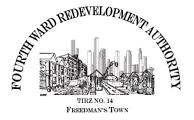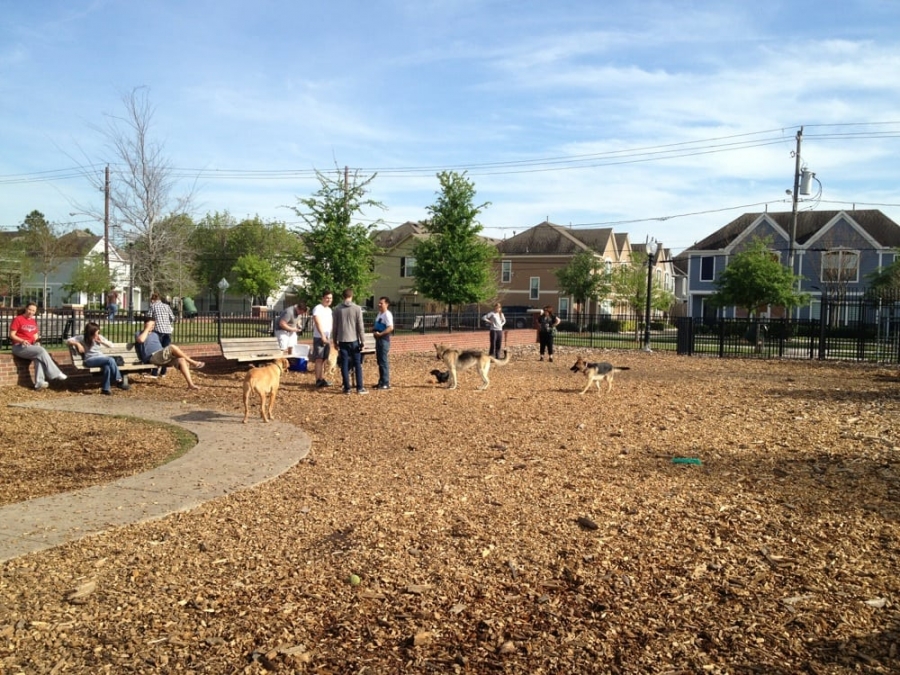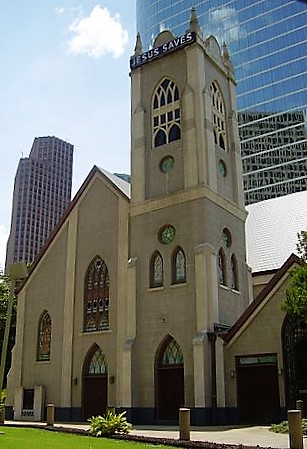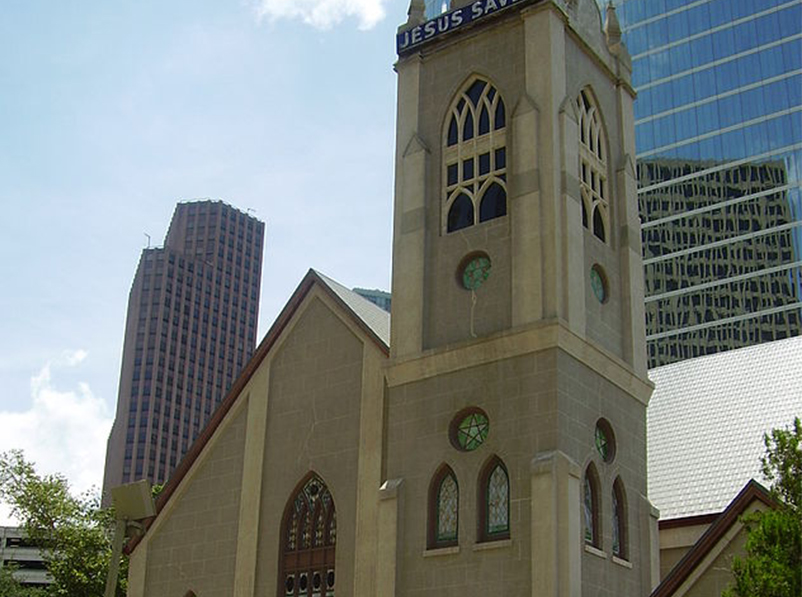The Fourth Ward was established as one of four wards by the City of Houston in 1839. By 1906 it included much of what is, as of 2008, Downtown and Neartown; at that point the city stopped using the ward system.
The area was the site of Freedman’s Town, composed of recently freed slaves. The first freed slaves departed the Brazos River cotton plantations in 1866 and entered Houston via San Felipe Road (now named West Dallas in the portion from Downtown Houston to Shepherd Drive). The slaves settled on the Buffalo Bayou’s southern edge, constructing small shanties as houses. Brush arbors along the bayou and borrowed churches were used as houses of worship. Several more ex-slaves leaving plantations arrived in Freedmen’s Town. One brush arbor ultimately became the Antioch Missionary Baptist Church, the church where Jack Yates served as pastor. Yates and his son, Rutherford Yates, became major community leaders in the early days of the Fourth Ward. The neighborhood became the center of Houston’s African-American community in the late 19th century and early 20th century.
Fourth Ward Cottage
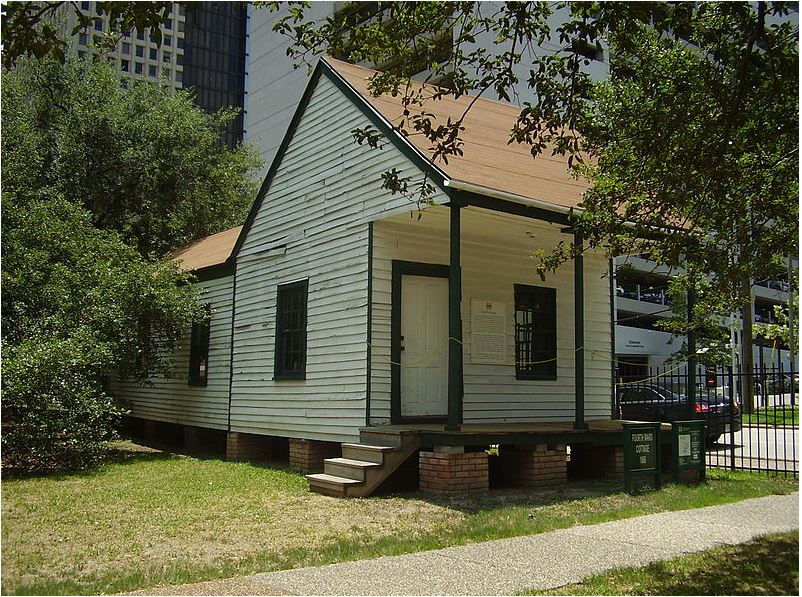
The “Fourth Ward Cottage” – A cottage dating back to at least 1866 that is now in Sam Houston Park in Downtown Houston
The 1,000 freed slaves who settled the community selected the site along the southern edge of the Buffalo Bayou since the land was inexpensive and because White Americans did not want to settle on the land, which was swampy and prone to flooding. The settlers of Freedmen’s Town paved the streets with bricks that they hand-made themselves. An oral tradition said that in the early 20th century, members of the congregation of the Reverend Jeremiah Smith paved Andrew Street with the first bricks after the City of Houston refused to pave it. Yates, Smith, and Ned P. Pullum were three of the major Fourth Ward area ministers.The residents provided their own services and utilities. Residents included blacksmiths, brickmakers, doctors, haberdashers, lawyers, and teachers.
Antioch Missionary Baptist Church, now in Downtown Houston
From 1905 through the 1940s, the Freedman’s Town area included what was Houston’s largest baseball venue through 1927, West End Park. It was home to the city’s Minor League baseball team, the Houston Buffaloes, and it was the city’s first venue for Negro Major League games. At the turn of the century, black ministers established businesses and churches and remained as community leaders.
As more and more families moved in, the neighborhood increasingly became crowded. A narrative that accompanied the 1984 application of the Fourth Ward to become listed in the National Register of Historic Places, based on various historical documents and deed records, said that the crowded conditions and high rent prices may have led to a riot in 1917 when African-American soldiers stationed in the area attacked White people. By the 1920s and 1930s the population density of Freedmen’s Town was almost six times that of the average of the entire City of Houston.
In the 1920s the Third Ward surpassed the Fourth Ward as the center of Houston’s African-American community.
The Fourth Ward lost prominence due to its inability to expand geographically, as other developments hemmed in the area. Mike Snyder of the Houston Chronicle said that local historians traced the earliest signs of decline to 1940, and that it was influenced by many factors, including the opening of Interstate 45 and the construction of Allen Parkway Village.The Allen Parkway Village public housing complex opened in the 1940s. Located on the north side of the Fourth Ward, it originally was an all-White development, and it initially had the name San Felipe Courts.
The opening of Interstate 45 in the 1950s separated an eastern portion of the Fourth Ward area from the community; that portion became the Allen Center business and hotel complex and is now considered to be a part of Downtown Houston.The freeway also severed the community’s connection with Downtown itself. After the civil rights reforms of the 1960s, black homeowners began leaving the Fourth Ward, leading to further decline.
The freeway construction and urban renewal programs lead to the loss of portions of the community.
